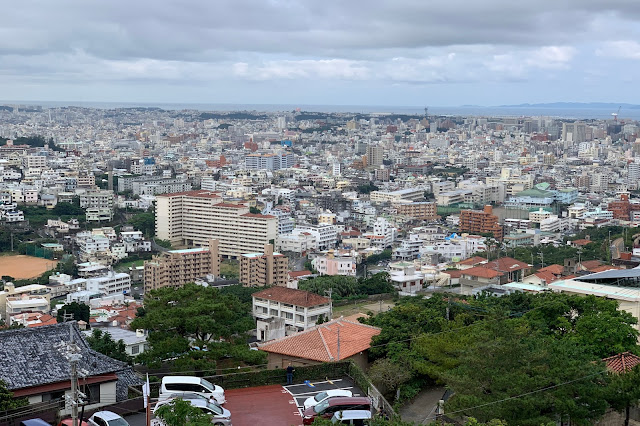Well, 4 days, 3 nights, 2800 km in the air and some 500km of driving on the ground later, while Okinawa has still not become our favorite travel destination, we did have a lovely time there, exploring this Pacific island just 2 hours away from home with a new perspective and impression. First thing first, J is right – culture-wise Okinawa was unlike anywhere else in Japan and we saw the most noticeable difference in none other than their food. Local Okinawan cuisine resembles more of the southern Chinese cuisine than from the Japan mainland, more rustic in style and ingredients-driven using produce and herbs found only on the island and nowhere else. There are less emphasis on seafood (surprisingly given it’s an island), but more on meat, especially pork from head to tail, and they are the only few regions in Japan who eat goat or lamb as their common diet – not that we have tried any this time.
Goya, or bitter gourd, and Umibodo, the algae also known as “sea grapes” are perhaps the two ingredients most people associated with Okinawan cuisine. Chinese (苦口良藥)and Japanese (良薬は口に苦し) shared the same proverb which meant “Good medicine tastes bitter” and same can be said about goya, known for the bitter taste and considered super healthy. Goya Chanpuru was perhaps the most well-known Okinawan dish – to me, it’s just like any Chinese stir-fry with slices of bitter gourd, tofu, egg and optionally, meat, but I did enjoy more when the goya was pickled and served with a bowl of rice - the simpler the better.
“Just avoid anything on Kokusai-dori” was another piece of advice J gave us before we depart for Okinawa, referring to the main shopping street in Naha, Okinawa’s "capital" that every tourist guide books raved about. Those who came and expected something like Osaka’s ever-busy Shinsaibashi would surely be disappointed, with the street filled with restaurants and souvenir shops that mostly catered for people from out of town, likewise for the Makishi Kosetsu Market, dubbed "Okinawa’s Kitchen" – it’s nowhere near Kyoto's famous Nishiki Market if one must draw comparisons. It's still worth a visit while you were in town but just with the right expectation.
Masuya 塩の専門店 塩屋: www.ma-suya.net
Koosya 古酒家: koosya.jp
And going off just a block or two away from Kokusai-dori, there were quite a number of local diners, izakayas and bars worth exploring. We stumbled across a few “standing bar” at a back street near Makishi Kosetsu Market when most of the shops were already shut – they were lively with people just stood at the bar counter outside and enjoyed a glass or two with deep-fried skewers made in the small kitchen inside. After dinner on our first night in Naha, we stopped by a small izakaya called Densuke Shoten not far from our hotel, where it’s packed with people even late at night (with tables overflew to the street) and with an interesting selection of sakes and snacks menu. (let's just say we never got converted to Awamori fans after a few glasses and were more than happy to stick with traditional Nihonshu, or sake) We ended up eating and drinking more even after a full dinner just a couple hours before.
Densuke Shoten でんすけ商店: tabelog.com/okinawa/A4701/A470101/47017331/
In terms of sightseeing spot, I would say Tsuboya Yachimun Dori is the only one that people shouldn’t miss, with the little street just down the road from Kokusai-dori home to dozens of pottery studios and shops. The major production may no longer take place in the area, one could still see the remains of a kiln or shops with craftsmen showcasing some of the traditional Okinawa ceramics art that began centuries ago back in the times of Ryukyu Kingdom. Again, it's not like the main street of Arita filled with shops, studios and visitors when we went during the ceramics fair time, but there were some interesting items on display and for sale. I regret not picking up one of the kara-kara bottles, traditionally used for decanting awamori (but equally suited as a general liquid pourer)
We strategically stayed in a hotel (Hyatt Regency Naha) that’s in between Kokusai-dori and Tsuboya Yachimun Dori so we could just take a walk to both without having to worry about transportation or parking. Other than the convenient location, the hotel itself was neat and fairly new, and our room was spacious with a pretty decent view of the town from high floor... got nothing to complain about.
Hyatt Regency Naha: www.hyatt.com/en-US/hotel/japan/hyatt-regency-naha-okinawa/okarn









No comments :
Post a Comment